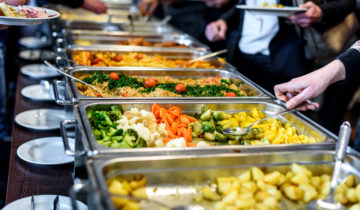To bring alternatively farmed eggs out of their shells, we provide guidance and support to our farmers for this transition which is not without consequence on the cost of production: a reduced density of birds, more outdoor ranges, additional monitoring work, more lost or broken eggs, etc.
Costs of the transition to free-range
Improved animal welfare, which is required by a European directive from January 2012 but also by consumer demand, will not come without its share of consequences for farmers. To bring battery cages (now prohibited) into compliance with the new standards, producers had to invest in:
- 750 cm² cages (compared with 550 cm² before the directive)
- Nests, perches and litter for the hens’ behavioural needs
- Increased attention to animal health.
Today, farmers must adapt to new buying patterns that dropping Code 3 eggs by investing more money to make the switch to alternative farming methods. Below is a comparison between caged farming and free-range farming:
| Caged farming (Code 3) | Free-range farming (Code 1) |
| 13.3 hens/m² | 9 hens/m² |
| No outdoor range | Range with 4 m²/hen |
| No outdoor access | Outdoor access |
| Mortality rate: 3% | Mortality rate: 6-7% (predators, contaminated water, etc.) |
| Standard monitoring | Enhanced monitoring |
| Easy egg collection | More eggs lost or broken |
Egg producers, many of whom made massive investments in order to comply with the European directive, are required to repay their loans over the long term, a situation that further complicates the transition.
Engaged consumers, distributors and retailers
94% of French people support the “Societal Contract for the Future”, an initiative taken by egg professionals that aims to have at least 50% alternatively farmed laying hens by the end of 2022. In any case, that was the result of a survey conducted in March 2017 by the CSA Institute on behalf of the CNPO (French National Egg Promotion Committee).
And distributors like Pomona, Brake and Sodexo are making more and more commitments with this in mind. Retail chains like Monoprix in France, Coop in Italy and Sainsbury’s in the United Kingdom have decided to remove caged eggs from their branded products. While this is a positive trend, the CNPO has found it to be rather abrupt: “Recently, at the risk of causing shortages on the shelves and under the pretext of growing societal pressure, many retail chains have announced their definitive elimination of enriched caged eggs […] without taking into account either time constraints or technical issues, and even less so the economic impact of the far-reaching conversion work demanded of the farmers”. This is precisely why d’aucy gave itself the objective to make the transition to 100% alternatively farmed eggs.
Cage-free hens can engage in natural behaviours
The consideration of animal welfare has a direct impact on the quality of the eggs that are laid. Compared to caged birds, cage-free hens are able to engage in multiple natural behaviours that are specific to their species, like flying, taking dust baths, perching to sleep, laying their eggs “in private”, etc. By abandoning the use of Code 3 eggs, restaurateurs and caterers can level up their menus by serving their guests food from farms that respect both animal welfare and the environment.
Cocotine is adapting to the demands of its customers by supporting its farmers to stop using caged eggs.







